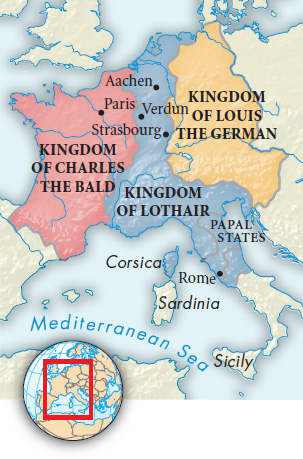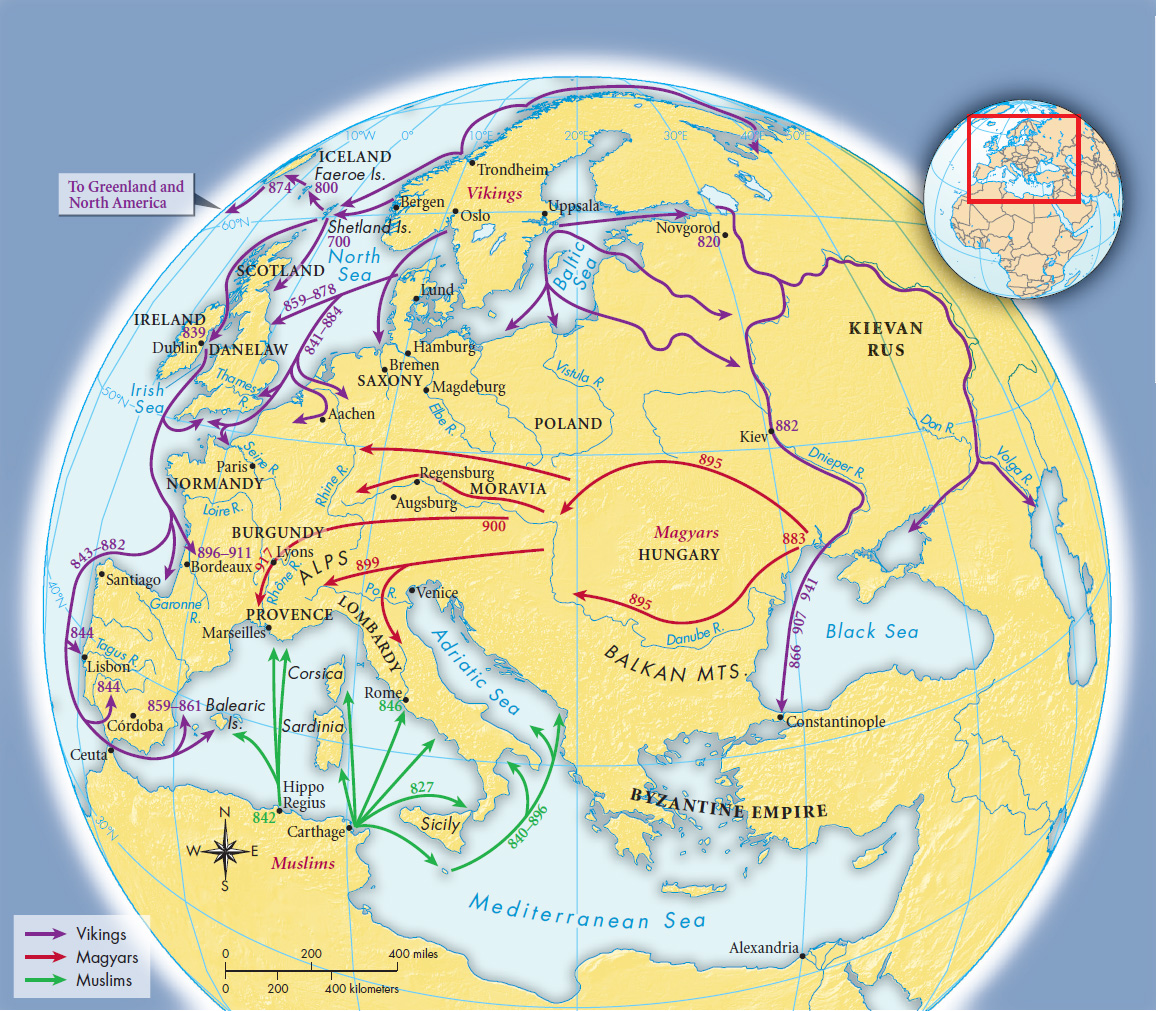Invasions and Migrations
What were the consequences of the ninth-century invasions and migrations?

Charlemagne left his vast empire to his sole surviving son, Louis the Pious (r. 814–840), who attempted to keep the empire intact. This proved to be impossible. Members of the nobility engaged in plots and open warfare against the emperor, often allying themselves with one of Louis’s three sons, who were in conflict with their father and with one another. In 843, shortly after Louis’s death, his sons agreed to the Treaty of Verdun (vehr-DUHN), which divided the empire into three parts: Charles the Bald received the western part; Lothair the middle part and the title of emperor; and Louis the eastern part, from which he acquired the title “the German.” Though no one knew it at the time, this treaty set the pattern for political boundaries in Europe that has been maintained until today.
After the Treaty of Verdun, continental Europe was fractured politically. All three kingdoms controlled by the sons of Louis the Pious were torn by domestic dissension and disorder. The frontier and coastal defenses erected by Charlemagne and maintained by Louis the Pious were neglected. No European political power was strong enough to put up effective resistance to external attacks. Beginning around 850 three main groups began relentless attacks on Europe: Vikings from Scandinavia, representing the final wave of Germanic migrants; Muslims from the Mediterranean; and Magyars from central Europe forced westward by other peoples (Map 8.3).
MAPPING THE PAST

ANALYZING THE MAP What similarities do you see in the patterns of migration in these two periods? What significant differences?
CONNECTIONS How did the Vikings’ expertise in shipbuilding and sailing make their migrations different from those of earlier Germanic tribes? How did this set them apart from the Magyar and Muslim invaders of the ninth century?